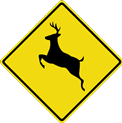Understand Florida Road Warning Signs
This section of the Florida Drivers Handbook includes photos of Florida road signs, traffic signals, and pavement markings and explains each of them.
Topics Addressed in this section of the Florida Driver Handbook include:
- Traffic Signals
- Traffic Signs
- Traffic Warning Signs
- Traffic Rectangle Signs
- Drawbridge Signs and Signals
Florida Drivers Handbook — Traffic Warning Signs
Ch. 4 Traffic Warning Signs
Slippery When Wet. In wet weather, drive slowly. Do not speed up or brake quickly. Make sharp turns at a very slow speed.
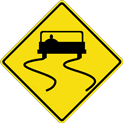
Divided Highway Ahead. The highway ahead is divided into two one-way roadways. Keep to the right.
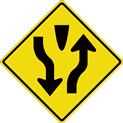
Divided Highway Ends. The divided highway on which you are traveling ends 350 to 500 feet ahead. You will then be on a roadway with two-way traffic. Keep to the right.
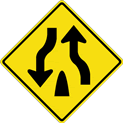
Low Clearance. Do not enter if your vehicle is taller than the height listed on the sign.

Bicycle Crossing. Warns you in advance that a bikeway crosses the roadway ahead.
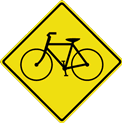
Merging Traffic. You are coming to a point where another traffic lane joins the one you are on. Watch for other traffic and be ready to yield the right-of-way when necessary.
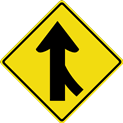
Pedestrian Crossing. Watch for people crossing the street. Slow down or stop if necessary.
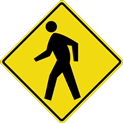
Narrow Bridge. The bridge is wide enough to accommodate two lanes of traffic, but with very little clearance.
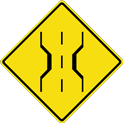
Dip. There is a low place in the road. Go slowly and be ready to stop if the dip is filled with water.
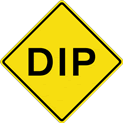
Soft Shoulder. The dirt on the side of the road is soft. Don't leave the pavement except in an emergency.
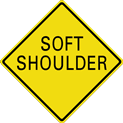
One Lane Bridge. The bridge is wide enough for only one vehicle at a time. Make sure the bridge is clear of oncoming traffic before you cross.
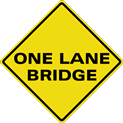
Pavement Ends. The road surface ahead changes from a hard surfaced pavement to a low-type surface or earth road.
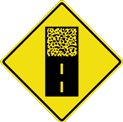
Right Curve. Slow your speed and keep well to the left. The road will curve to the right.
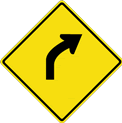
Double Curve. The road will curve to the right, then to the left. Slow your speed, keep to the right, and do not pass.
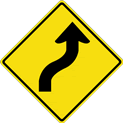
Winding Road. There are several curves ahead. Drive slowly and carefully.
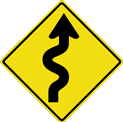
Truck Crossing. Watch for trucks entering or crossing the highway.
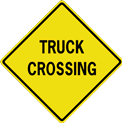
Cross Road. A road crosses the main highway ahead. Look to the left and right for other traffic.
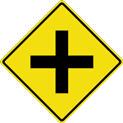
Side Road. Another road enters the highway from the direction shown. Watch for traffic from that direction.
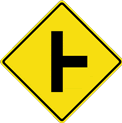
Sharp Right Turn. The road will make a sharp turn to the right. Slow your speed, keep to the right, and do not pass other vehicles.
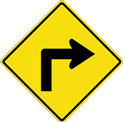
Reduction of Lanes. There will be fewer lanes ahead. Traffic must merge left. Drivers in the left lane should allow others to merge smoothly. Right lane ends.
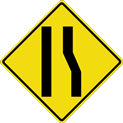
Advisory Speed Sign. The highest safe speed you should travel around the curve ahead is 25 miles per hour. Advisory speed signs may be used with any diamond-shaped warning sign.

Hill/Downgrade. Slow down and be ready to shift to lower gear to control speed and save brakes.
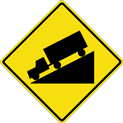
Yield Ahead. This sign warns of a yield sign ahead. Slow down and be prepared to stop at yield sign or adjust speed to traffic.
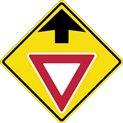
Traffic Signal Ahead. This sign warns of traffic signals at the intersection ahead. Slow down; poor visibility is likely.
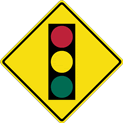
Stop Sign Ahead. When you come to this sign, slow down to be ready to stop at the stop sign check.
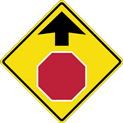
Two-Way Traffic Ahead. The one-way street or roadway ahead ends. You will then be facing oncoming traffic.
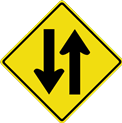
Animal Crossing. The animal pictured on the sign is common in this area: watch for this species crossing the road particularly during twilight and night-time hours.
